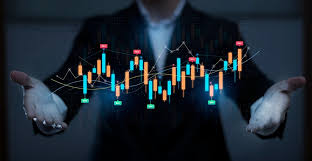Exploring the Dynamics of Forex Trading Systems
In the ever-evolving financial landscape, understanding the nuances of Forex trading systems is crucial for traders aiming to succeed in the global market. With platforms such as forex trading system Trading Broker Global, traders are afforded an environment conducive to market exploration and strategy implementation.
What is a Forex Trading System?
A Forex trading system is a set of rules or guidelines that govern how a trader will approach the forex market. These systems can be automated or manual and typically include specific entry and exit strategies, risk management protocols, and trade management techniques. A well-developed trading system helps traders to maintain discipline, avoid emotional decision-making, and increase their chances of profitability.
The Components of a Successful Forex Trading System
While every trader may have a unique style and approach, there are several fundamental components that most successful Forex trading systems share:
- Technical Analysis: Most Forex trading systems rely heavily on technical analysis, which involves evaluating historical price movements and market trends. Traders typically use various tools and indicators like Moving Averages, Bollinger Bands, and Relative Strength Index (RSI) to identify potential trading opportunities.
- Fundamental Analysis: Understanding the economic factors that drive currency strength is critical. Economic indicators, geopolitical events, and central bank policies can significantly impact currency movements. A sound trading system incorporates fundamental analysis to forecast potential price movements.
- Risk Management: Effective risk management is a cornerstone of every successful trading system. This includes position sizing, setting stop-loss orders, and knowing when to exit a trade. A trader must always manage their risk to protect their capital and maintain sustainability in trading.
- Psychological Discipline: The psychological aspect of trading can often be overlooked. A solid trading system includes methods for maintaining discipline, such as strict adherence to the trading plan and coping strategies for dealing with losses and market volatility.
Types of Forex Trading Systems
Forex trading systems can generally be categorized into several types based on trading styles and methodologies:
- Scalping: Scalpers aim to make quick profits from small price changes, often executing multiple trades within a short time frame. This style requires significant attention to market movements and rapid decision-making.
- Day Trading: Day traders open and close positions within the same trading day, avoiding overnight exposure to market risk. This strategy relies on technical analysis and often incorporates news events that can cause significant price movements throughout the day.
- Swing Trading: Swing traders take advantage of price swings over several days or weeks. This type of trading requires a different approach, often using longer timeframes for analysis and employing both technical and fundamental analysis.
- Position Trading: Position traders hold trades for extended periods, from weeks to months, and base their decisions on fundamental analysis and long-term trends. This requires patience and a different mindset compared to more short-term trading strategies.

Developing Your Own Forex Trading System
Creating a personalized trading system is a crucial step for any trader. Here are the essential steps to consider:
- Define Your Goals: Determine what you want to achieve through trading. This could range from generating a secondary income to achieving financial independence.
- Choose a Trading Style: Select a trading style that aligns with your personality, time commitment, and risk tolerance. This will significantly influence how you develop your system.
- Create Rules: Develop clear and concise trading rules based on your selected strategy. This includes entry and exit points, stop-loss placement, and how to manage trades once they are active.
- Backtest Your System: Before committing real funds, backtest your trading system using historical data. This allows you to see how your system would have performed in past market conditions.
- Monitor and Adjust: Once you start trading with real money, continuously monitor your system’s performance and make adjustments as necessary. Market conditions change, and your system must adapt to remain effective.
Conclusion
The Forex market offers immense opportunities for traders willing to invest time and effort into developing a solid trading system. By understanding the key components of successful trading, the different types of systems available, and the steps to create your own, you are well on your way to navigating this complex market environment. Remember that success in Forex trading is a journey, and continuous learning and adaptation are essential to prospering in this dynamic landscape.
